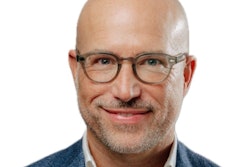Spring enrollment numbers are looking up across the postsecondary sector, according to the latest data from the National Student Clearinghouse Research Center, which collects data from almost all U.S. institutions.
Their new report, "Current Term Enrollment Estimates Spring 2024," shows that undergraduate enrollment grew 2.5% since spring 2023, which means over 359,000 more students enrolled this spring to pursue their bachelor’s degree, associate degree, or certificate. Graduate degree enrollment also improved by 3%, reversing the previous year’s losses.
“If we look at the rates [of increase], 2.5% undergraduate increase compared to last spring when the growth was 1.2%, that’s twice the rate of increase we saw in 2023,” said Dr. Doug Shapiro, vice president of research and executive director of the research center. “That’s a pretty dramatic turnaround.”
This continues the upward trend that began last fall after years of declining enrollments in the wake of the COVID-19 pandemic, which hit community colleges particularly hard. This spring, growth was primarily driven by community colleges, where enrollment rose 4.7% in urban settings and 7.4% in suburban areas. Most of these gains were seen at public, two-year institutions that offer vocational degrees.
Dual enrollments are another source of significant increases, making up 10% of total growth seen this spring, consistent with their growth last year, said Shapiro.
“[Dual enrollment numbers are] quite a bit higher than if we look at traditionally aged students, 18 to 20 years old. That growth is only 2.9%,” said Shapiro.
Historically Black colleges and universities (HBCUs) also saw consistent year-over-year growth, with both undergraduate and graduate enrollment increasing this spring. Total enrollments at HBCUs are up 1.1 percentage points from last year.
Growth was seen across almost every region in the U.S., with notable exceptions in the Rust Belt (West Virginia and Pennsylvania), and Washington and Oregon, where enrollment decreased.
Overall, it’s good news, Shapiro acknowledges, but it comes with two important caveats. The first: while these increases are a positive trend, total enrollment numbers are still below what they were before the pandemic.
 Dr. Doug Shapiro, vice president of research and executive director of the Research Center.
Dr. Doug Shapiro, vice president of research and executive director of the Research Center.
The second concern comes from the impending results of the FAFSA delays. While these spring numbers may be positively trending now, no one is quite sure how severely fall enrollment will be shaped by FAFSA complications. It’s “the biggest reason for caution,” said Shapiro.
“There’s a lot of questions and concerns that this is potentially another low that’s come out of left field for higher education, much like the pandemic,” said Shapiro. “It’s bound to have an effect on fall enrollments, we just don’t know how much.”
Dr. Frank Fernandez, an associate professor of higher education leadership and policy at the University of Florida, said it will likely be Black, Brown, low-income, and first-generation students who will be most negatively impacted by FAFSA’s glitches. He added that he is particularly concerned another sector of higher education will gobble up these students with tantalizing offers; that is, private for-profit institutions.
“I wouldn’t be surprised if for-profits come up with new, innovative ways to be like, ‘No FAFSA? No problem! We’ll get you through the door!’” said Fernandez. “The big for-profits are good at doing that, especially with Black or Brown students.”
Private, for-profit institutions also saw increased enrollment this spring, with urban-based institutions experiencing a 10.4% increase over the previous year.
“Those institutions tend to load students up with debt, and they don’t graduate them,” said Fernandez, adding that their marketing often targets students from minoritized communities.
But changes could still be made over the summer to help negate the worst effects of the FAFSA delay.
“This summer, I imagine we’ll see any state policy that can be waived will be, like delaying tuition fees, just opening up all the stops and seeing, ‘How do we make sure that we get students in the door?’” said Fernandez.
Because of these unknowns, Fernandez said hiring might be impacted over the summer, while institutional leaders wait with bated breath to see how FAFSA plays out.
“Just because we had a good spring, we may not have a good fall,” said Fernandez.
Liann Herder can be reached at [email protected].















